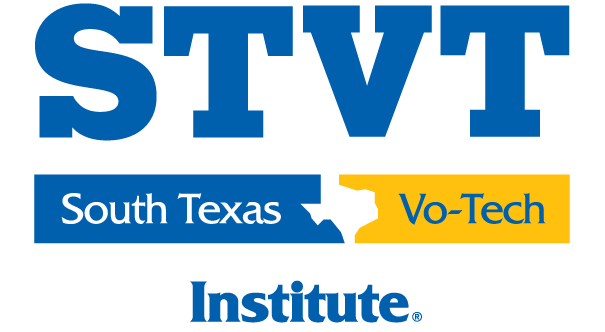If you’ve already explored what vocational training is and how it differs from traditional education, you may be wondering: what comes next? Vocational training is designed to help students build practical skills for specific industries. But what can you do with those skills once you’ve completed your program?
At South Texas Vocational Technical Institute (STVT), we believe education should help people grow in ways that align with their goals. That’s why our programs focus on helping prepare students to enter the workforce with confidence, not just through instruction, but through support, practice, and hands-on experience.
What Does Vocational Training Help You Prepare For?
Vocational training focuses on helping students develop the practical skills they may use in entry-level positions across various essential fields. While it doesn’t always lead directly to licensure or advanced certifications, it lays the groundwork for those interested in fields that value reliable, skilled, and hands-on professionals.
Generally speaking, vocational programs are designed to build confidence in areas like:
- Troubleshooting and diagnostics
- Equipment or tool handling
- Administrative and procedural knowledge
- Following safety standards and protocols
- Communicating with customers or teams
Whether you’re trying to learn to install electrical systems or manage digital records, vocational training can help you develop a real-world skill set designed to support day-one readiness in professional environments.
Students may also gain exposure to industry terminology, documentation procedures, and the basics of customer service. These foundational elements can help prepare students to operate effectively in environments where efficiency, accuracy, and teamwork matter.
Fields Where Vocational Training Applies
STVT’s vocational training options are rooted in the South Texas community. While offerings vary by location, many programs support training in these areas:
- Skilled trades: Students may develop core trade skills that apply to installation, maintenance, and repair work. These abilities can be used in service roles, residential support, and team-based projects.
- Healthcare: From managing patient information to supporting clinical teams, students may learn administrative and customer-focused processes that help organizations function efficiently.
- Business: Some programs may introduce students to basic business systems, tools, and workflows used in service-oriented environments.
Each of these fields values reliability, teamwork, and technical ability, which are key areas vocational training aims to strengthen.
Vocational training also supports an understanding of how different systems interact. For instance, an aspiring HVAC technician might learn how electrical circuits influence HVAC system behavior, while a student in administrative training may see how insurance coding impacts billing processes. Understanding these connections can help students problem-solve more effectively.
After Training — What’s Next?
So what can you do once you’ve completed vocational training? While every student’s path looks a little different, there are some common next steps:
- Apply for entry-level roles in industries that match your area of training
- Practice your skills in real-world settings and continue developing them through on-the-job experience
- Pursue additional credentials, where applicable, to continue building toward long-term goals
For example, students who complete training in HVAC may go on to sit for the EPA Section 608 certification, depending on their employer’s requirements. Others may choose to deepen their experience by seeking opportunities in customer service, maintenance teams, or clinic operations.
Vocational training is often just the beginning; it can provide a starting point that students can build on as they gain confidence and familiarity in their chosen field.
In many industries, entry-level roles serve as stepping stones toward more advanced or specialized positions. Students who apply their training consistently may eventually choose to pursue additional certifications or employer-led advancement opportunities.
Why Students Value Vocational Training
Many students are drawn to vocational training because of its structure and focus. These programs are built to help learners stay engaged and make progress toward goals without unnecessary delays. Here’s why that matters:
- Programs are typically shorter than traditional degrees, often under one year
- Coursework is career-focused, with less time spent on unrelated subjects
- Hands-on practice is prioritized, which can help reinforce learning through repetition and demonstration
- Support systems like flexible schedules and instructor guidance are designed to help students succeed
At STVT, we regularly hear from students who say that hands-on learning made all the difference. Being able to see, touch, and troubleshoot equipment or to walk through tasks step-by-step in a supportive environment can help skills stick and build long-term confidence.
Vocational programs also promote community. Students often work in team settings, which can lead to learning not just the task at hand but also how to communicate clearly and solve problems together. These soft skills can be just as important as the technical ones and can help students become valuable members of their future workplaces.
STVT’s Role in Helping Students Build Skills
At South Texas Vocational Technical Institute, we’re proud to support students from different walks of life who are ready to move forward. Whether you’re looking for training to help change careers, returning to school after time away, or just getting started on your education journey, our goal is to help you feel equipped for the road ahead.
Our instructors bring practical experience into the classroom and lab. We focus on building an environment where questions are welcome, teamwork is encouraged, and learning is active.
We also recognize that life doesn’t stop when training starts. That’s why many of our programs offer flexible class options and student services to help with academic support, time management, and more.
STVT programs are designed with South Texas communities in mind. That means we focus on training that aligns with local workforce opportunities, students may learn skills that matter to the businesses and organizations around them.
In addition to lab time and hands-on projects, students may participate in simulated job scenarios. These practice environments can allow learners to apply what they’ve studied in realistic settings, gaining experience with tasks like completing work orders, following safety protocols, or using diagnostic equipment.
Lifelong Learning and Career Confidence
Vocational training doesn’t just prepare students for potential jobs, it can help them grow into confident learners who can adapt and solve problems. Many graduates continue to build their skills over time, whether through additional education, certifications, or employer-led learning.
Confidence plays a huge role in long-term success. Students who complete vocational programs often feel more capable of setting goals, taking initiative, and continuing to learn. That mindset is valuable in any field and can serve graduates well, no matter where their path takes them.
STVT is here to support those first steps. We know that starting something new takes courage, and we’re proud to stand beside our students as they move forward.
Ready To See Where Training Can Take You?
If you’re curious about what vocational training can do for you, STVT is here to help. Explore our program offerings or contact us today to see how skill-based education can support your goals, whether you’re aiming to start something new or take the next step in your journey.
Disclaimers: Information within this blog is for general information purposes only. South Texas Vocational Technical Institute does not assume or guarantee certification/licensures, specific job/career positions, income earning potential, or salary expectations based on the programs offered at South Texas Vocational Technical Institute. Career and program information statements in this blog do not guarantee that programs or other information mentioned are offered at South Texas Vocational Technical Institute.



